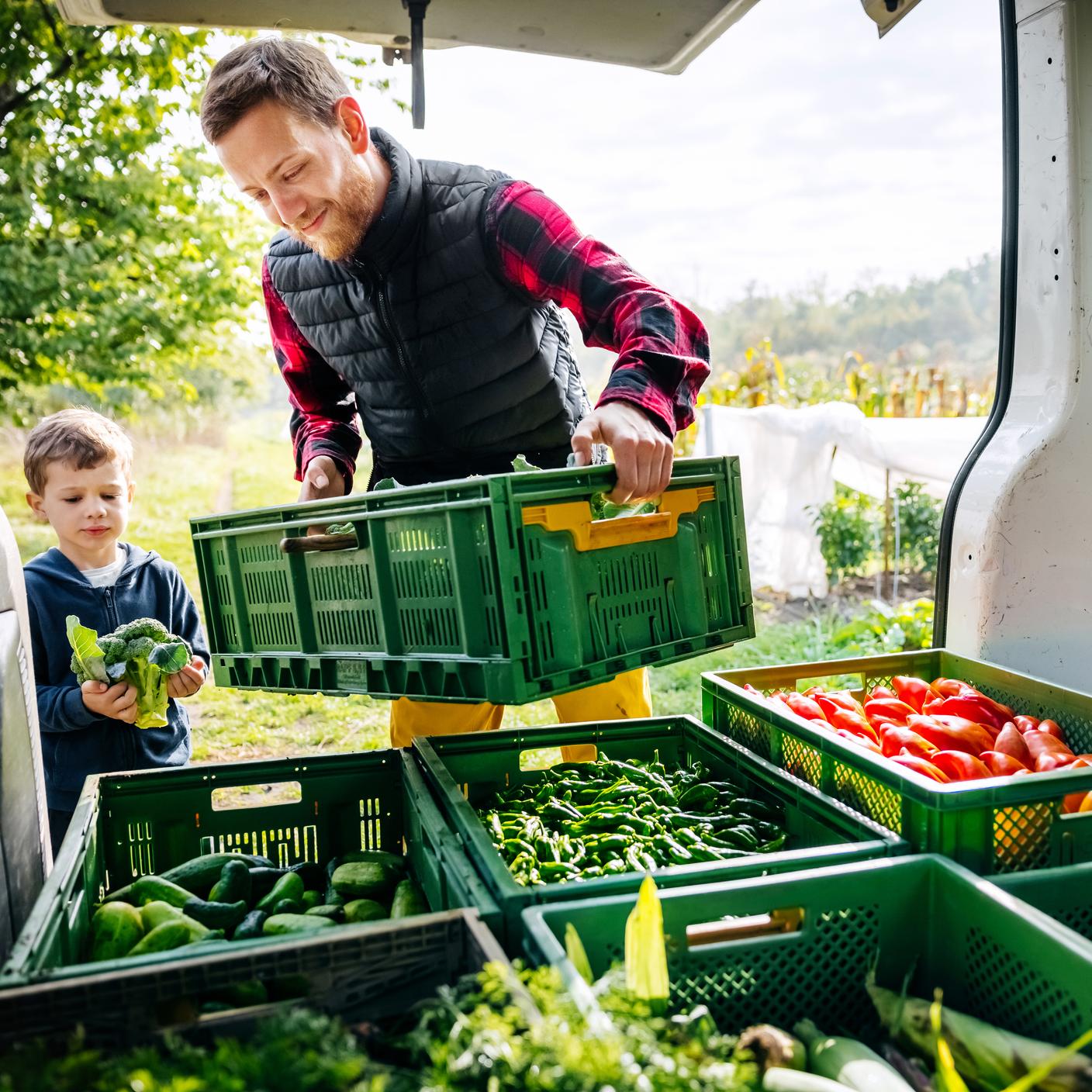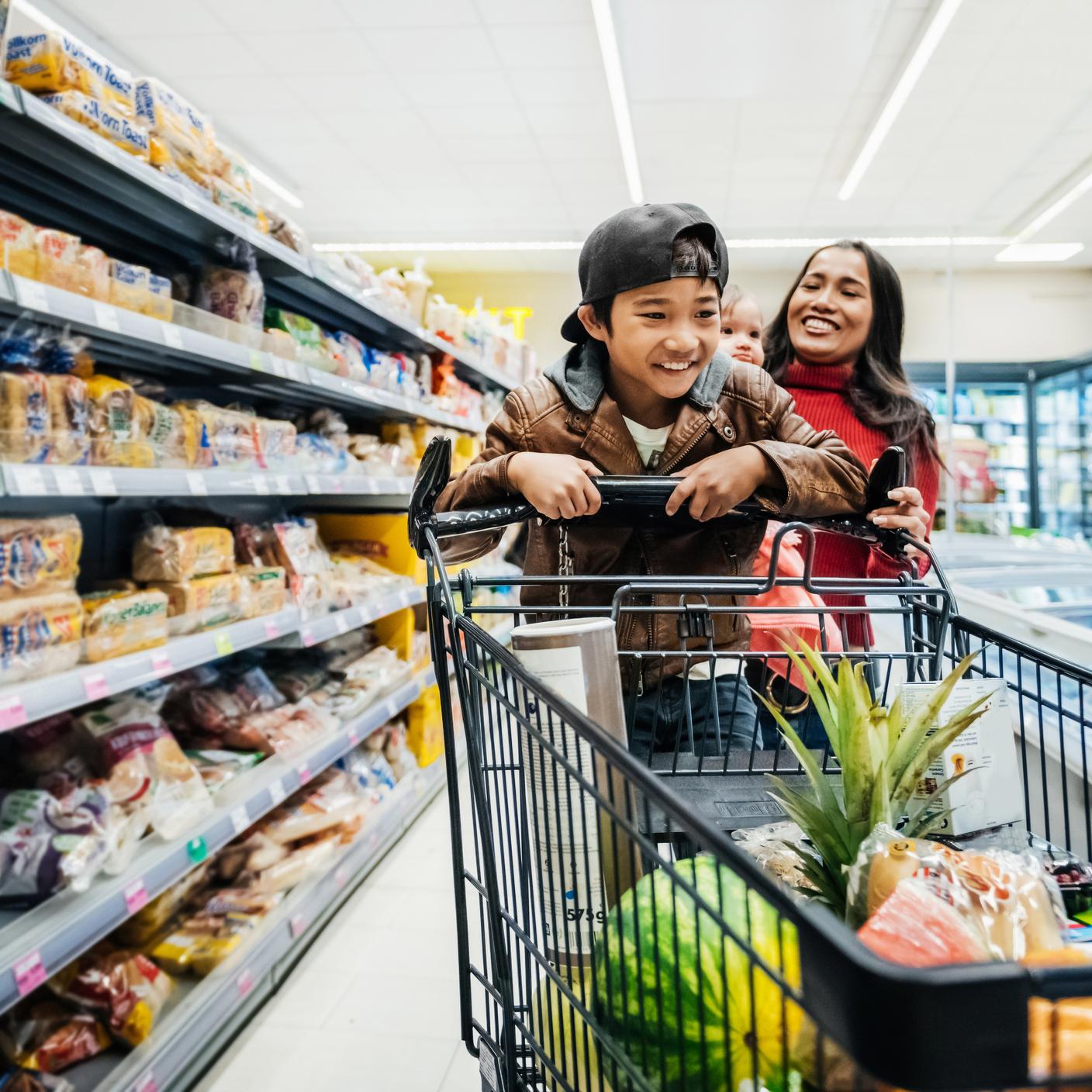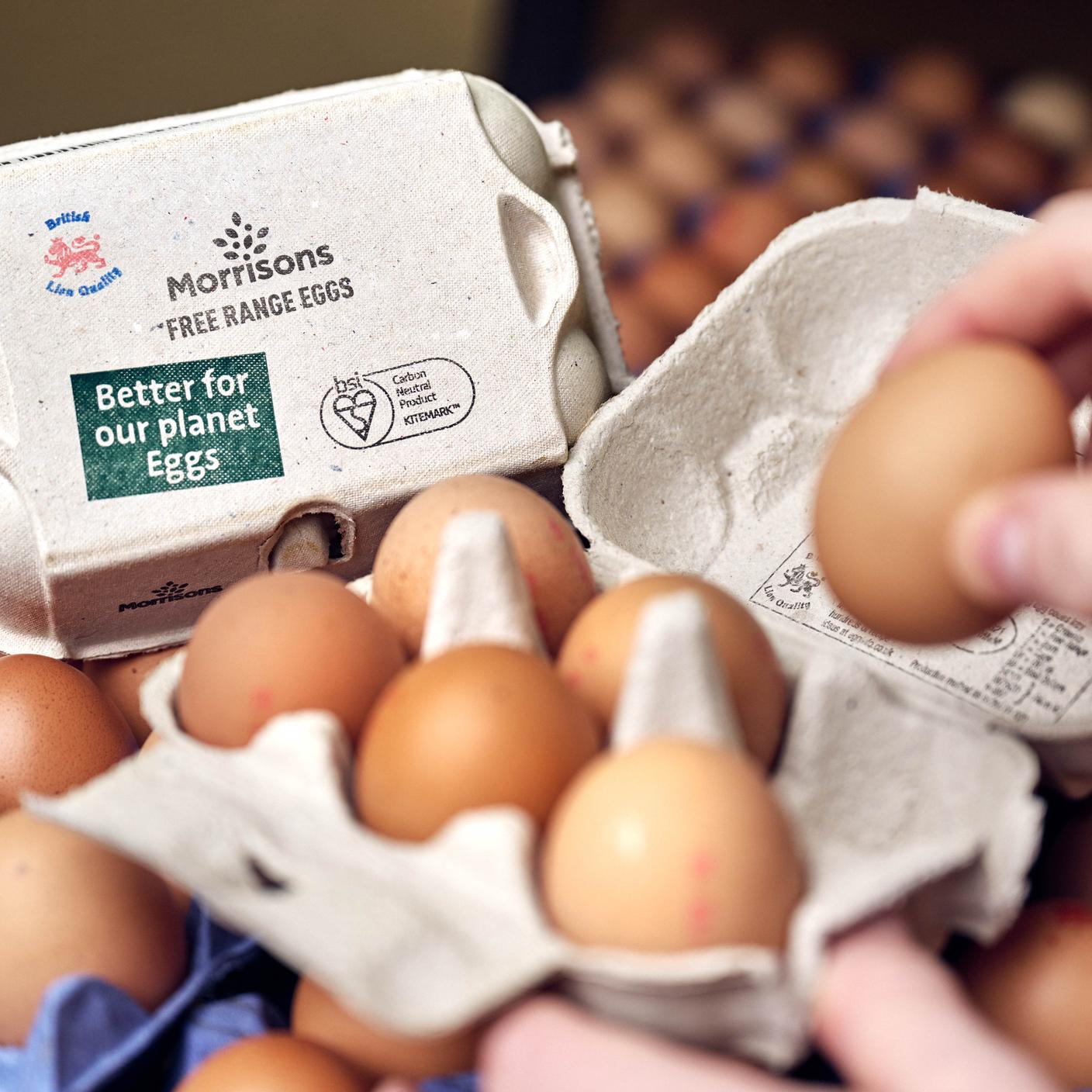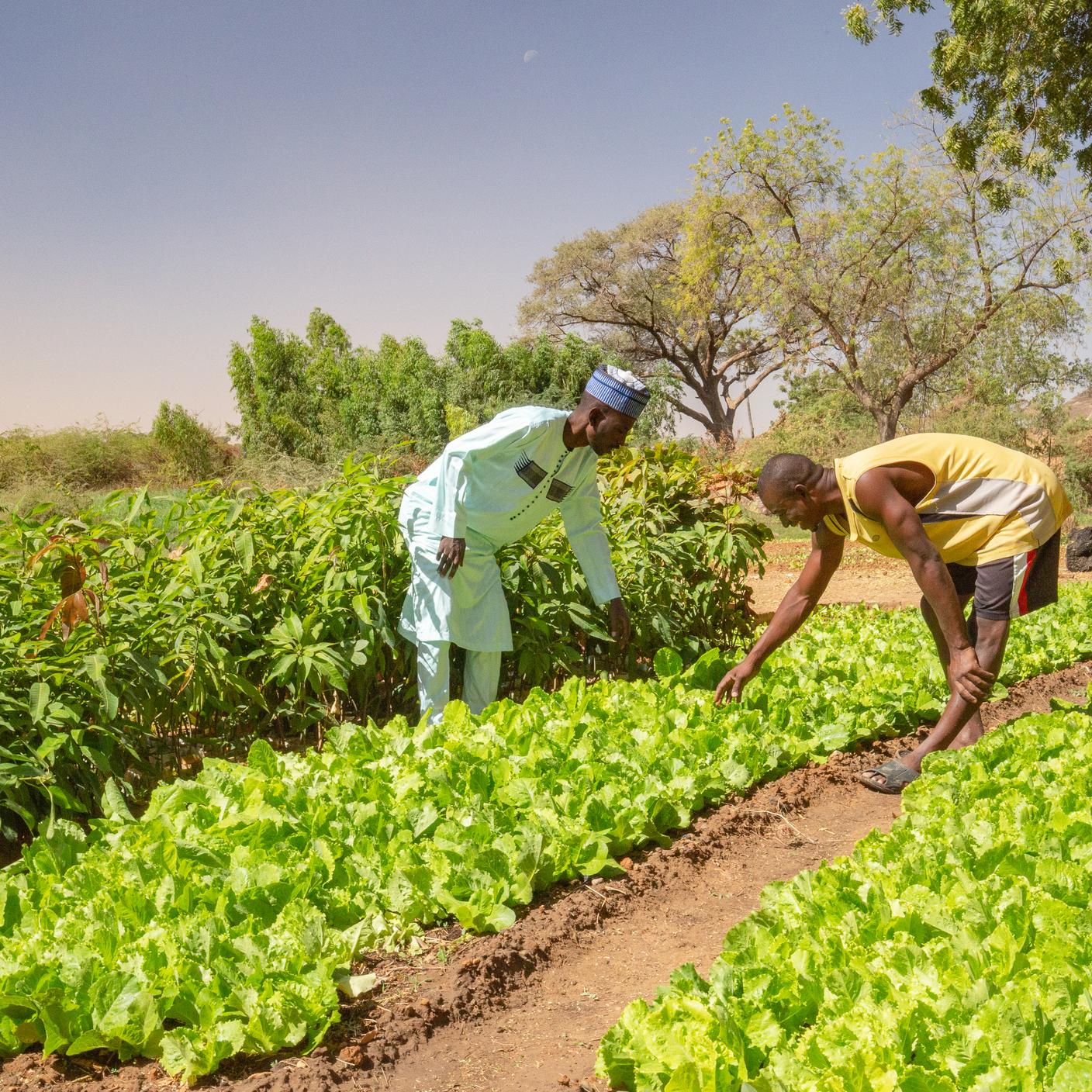Globally, there’s a distinction between food loss and waste.
Food loss: the decrease in the quantity or quality of food resulting from decisions and actions by food supply chain actors from the production stage up to, but excluding, retailers, food service
providers and consumers.
Food waste: the decrease in the quantity or quality of food resulting from decisions and actions by retailers, food service providers and consumers.
Food loss and waste include the edible and inedible parts of food and occur for many reasons, from spoilage, inaccurate forecasting, over-ordering and process loss, to households throwing out uneaten food.
According to research published at the end of 2024, 40% of all food is lost or wasted along the value chain – an increase on previous figures that suggested around a third of all food grown was lost or wasted.
Meanwhile, 24% of all water used in agriculture is used on food that ultimately will not be consumed by humans. That’s around 45 trillion gallons.
The direct impact of food loss and waste – not being used to feed people who need it – is hugely significant, given that 733 million people globally, or one in 11, are affected by hunger. Meanwhile, it’s estimated that nearly one in three people face some level of food insecurity.
However, the impact of food loss and waste goes far beyond undernourishment.
In addition to wasting valuable water, fertiliser, energy, fuel and land, food loss and waste produce methane when it rots in landfill. Approximately 8-10% of all human-caused greenhouse gas emissions come from food waste.
In terms of impact, the food lost or wasted in the US alone is the equivalent to the greenhouse gas produced by 32.6m cars. If ‘food waste’ was a country, it would be the world’s third-biggest emitter of greenhouse gasses, behind China and the US.
Global food waste has been on the UN’s agenda for a while now. UN Sustainable Development Goal (SDG) 12.3 aims to halve per capita global food waste at the retail and consumer levels and reduce food losses along production and supply chains, including post-harvest losses by 2030.
At current loss and waste levels, achieving that goal seems ambitious at best. It’s an issue, however, that is often overlooked – and the potential impacts are not always clearly understood.
Some companies are leading the way, however. The US Department of Agriculture last year (pre-election) published its US Food Loss and Waster 2030 Champions Report, which outlined the work of more than 45 food businesses committed to reducing food loss and waste in the US.
However, the levels of food loss and waste remain incredibly high – we’re using land the size of China to grow food that will not be consumed.
Therefore, it’s a significant opportunity for organizations. And, from a business perspective, addressing food loss and waste can be hugely impactful.
Back in 2017, research showed that for every dollar invested into reducing food loss and waste, $14 is saved in operating costs. While more up-to-date estimates aren’t available, that figure could now be viewed as conservative.
Regardless, that 14-fold return on investment (ROI) can either be saved or reinvested into other sustainability initiatives that require financial support. Businesses can create their own, positive sustainability story.
Add the potential environmental and societal benefits, and the business case for addressing food loss and waste is incredibly compelling.
The opportunity that is present right now for every food organization across the supply chain is to be a true leader in food loss and waste.
Reduction is step one, however the goal for businesses is to eliminate food loss and waste altogether – and, with the right assistance, processes and procedures, elimination is achievable.
The Food Recovery Hierarchy
While the goal for every organization should be eliminating food loss and waste, good practice is to repurpose or redirect if elimination is not yet possible.
Sending food waste to landfill is the last resort, and businesses can look at alternate uses for food waste.
The Food Recovery Hierarchy, published by the United States Environmental Protection Agency, details a series of actions organizations can take to divert wasted food.
After eliminating food waste in the first instance, these include, in order of preference:
- Feeding hungry people (donating to food banks, soup kitchens and shelters).
- Feeding animals (donating food scraps to animal feed).
- Industrial uses (providing waste oil for rendering and fuel conversion, and food scraps for digestion to recover energy).
- Compost (create a nutrient-rich soil amendment).
What organizations need to consider to reduce and eliminate food loss and waste
For many organizations, the food loss and waste question has often been tackled from the perspective of ‘what shall we do with it’, rather than ‘how can we reduce it’.
While doing something other than sending food loss and waste to landfill is essential, reducing the amount of food loss and waste you’re dealing with in the first place must be a key focus.
First, you need to be able to identify it. Assess your processes and supply chain – where does the waste happen?
A key element of this process – just as it is in any food safety assessment – is to walk through your facilities and identify any ‘hot spots’ in which food loss or waste is happening.
Analyze why it’s happening, and what could be done to prevent or reduce that loss or waste. It could be a process that needs refining, or equipment or software that needs updating or a behavioral change from the people who work on the production line.
For example, it could be that the tolerances built into lean processes aren’t optimized for reducing food loss and waste; speed may have been prioritized over product losses.
Across the industry, meanwhile, all food isn’t treated equally. Because of pricing, certain food commodities are more highly valued than others. While this is understandable and helps control the production of certain food types, it creates a throwaway culture for other, less expensive foods.
By assessing where your food waste hot spots are, and exploring with suppliers where it happens right across the food supply chain, you can begin to understand the scale of the issue – and the scale of the potential impact.
For waste not so easily eradicated, solutions can be identified – for example, new product lines using repurposed food that would have previously gone to waste, or online marketplaces that can connect buyers and sellers.
EPR (which holds producers accountable for the environmental impact of their products, with the goal of reducing waste, encouraging innovation, and making products more sustainable) is reshaping the food sector by shifting the financial and operational burden of packaging waste management from consumers and municipalities to food producers, manufacturers, and retailers.
EPR aims to make food producers pay the full net costs of managing and recycling the packaging waste arising from products they place on the market. This will help to drive further circularity of packaging by reducing unnecessary and difficult to recycle packaging and increasing recycling.
Preventing food waste may decrease EPR fees. By reducing food waste within packaged food, EPR fees can be significantly lowered because less packaged food will need to be landfilled.
States including California, Oregon, and Colorado are implementing EPR laws. The European Union enforces strict EPR under its Packaging and Packaging Waste Directive (PPWD), while Canada, Japan, and South Korea mandate producer-funded recycling systems.
Compliance with EPR not only mitigates regulatory risks but also presents an opportunity for brands to innovate with packaging design, enhance sustainability commitments, reduce environmental impact, and strengthen consumer trust in a market increasingly driven by circular economy principles.
And, ultimately, pushing companies to adopt circular economy strategies and improve waste management practices worldwide.
Linked to this, the past year or so has seen a number of AI-led packaging innovations, which can play a key role in reducing food loss and waste. From technology that provides a ‘real’ use by date, to packaging that communicates with in-store digital pricing to encourage sales close to the use-by date, technology and packaging companies have a large role to play.
How businesses can build their food waste reduction strategy
Food loss and waste impacts everyone involved in the food supply chain, from farming to consumers, and affects various issues from hunger and food security to GHG emissions.
A significant opportunity exists for food manufacturers and retailers to take a leading position on food loss waste. By leading by example, and talking to suppliers, buyers and consumers about tactics to reduce waste, as well as the impact small changes can have, businesses can become trusted voices in this space.
Highlighting the financial savings to be gained by only buying food that’s going to be eaten, or options to increase the shelf life of some foods, is a strong messaging position for consumers.
For businesses, educating staff on the financial and environmental impact is powerful – and it can create an impactful story to tell. .
And, while many businesses donate unused food to food rescue services today, donating food to those in need can still be built into business plans, purposefully giving those services the choice of the food they want to receive when they are able to receive it.
New initiatives to tackle food loss and waste
Across the globe, however, we are beginning to see positive movement as businesses of all sizes recognize the impact that tackling food loss and waste can make – and the hope is that other organizations are inspired by action and take meaningful steps, too.
For example, in New York in September 2024, the city’s first ‘Make Food Not Waste’ Restaurant Week was held. Top restaurants created dishes using food scraps and surplus ingredients to promote zero waste food.
Supermarket chain Tesco, meanwhile, announced in January that it was launching a raft of new sustainability measures. The UK high-street staple has committed to halving its food waste from its own operations, as well as making all of its own-brand packaging fully recyclable.
Taking inspiration, and introducing initiatives of your own
Tackling food loss and waste is a big prospect, with enormous nuance and complexity – and one that needs to be tackled intelligently and deliberately.
New processes, measurements and evaluation frameworks are needed to create a management system that’s focused on reducing, repurposing, and redirecting food loss and waste.
In order to systematically identify and reduce food loss and waste, a management system based on the “target-measure-act” framework can significantly contribute to the efforts of companies and stakeholders to achieve more.
Key steps to building a food loss and waste management system can include a gap assessment and measurement system, while engaging a company’s leadership and supply chain is key. In addition, ensuring efforts are measured and tracked enables continuous improvement
Taking steps to reduce food loss and waste
While tackling this issue may seem daunting, BSI can help guide you through every step of this process.
Speak to BSI today about everything related to food loss and waste, from waste management systems, gap assessments, and establishing the right measurements to engaging your leadership team and stakeholders with a compelling business case.
It’s important to get right.
Because, for those that do, the potential impact on the bottom line, the environment and society, is enormous.







